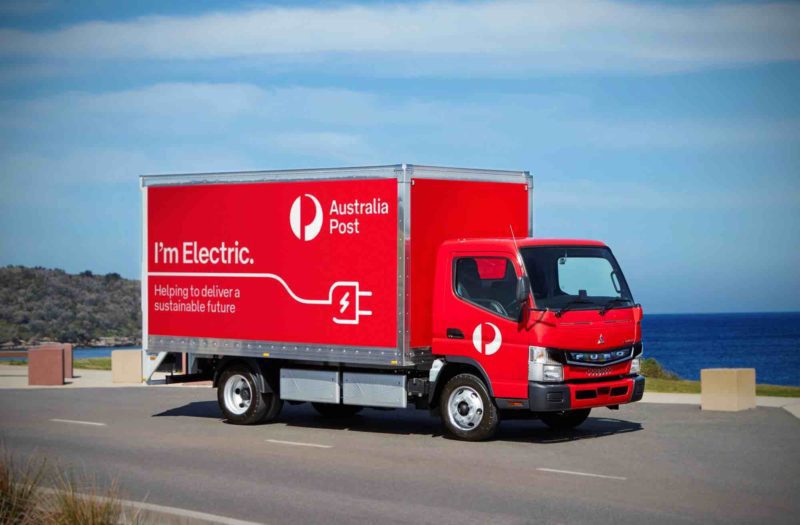Australia Post has embraced electric fleet, with more than 3,000 of its truck electric, the largest in Australia. However, the government-funded organization continues to add more, as it takes delivery of 20 all-electric eCanter trucks.
The eCanter trucks are made by the Mitsubishi Fuso Truck and Bus Corporation, MFTBC, headquartered in Japan. Each of the 7.5-ton gross weight trucks contains six liquid-cooled high-voltage 13.5 kWh lithium-ion battery packs (with 66 kWh usable) that lasts about 100 km on a single charge. On rapid DC charges, the batteries charge fully in 1.5 hours.
Drawing from the batteries is a 135 kW synchronous electric motor that produces 390 Nm of torque. Other features of the eCanter include Advanced Emergency Braking System, the Lane Departure Warning System, and the Electronic Stability Program.
The trucks will be imported from Portugal and have specifications that are standard in Japan and Europe. They have been tested worldwide, including in Australia, where they went through a six-month trial with maximum load.

Australia Post provides postal services in the country. It aims to cut its overall emissions by 15% by 2025, using 2015 as a reference.
The new electric trucks will support parcel deliveries in major cities in Australia. Some of them will be used by Startrack, a subsidiary of Australia Post that provides express logistics solutions for enterprise clients.
FUSO retail network will support the eCanter operation in conjunction with Daimler Truck and Bus Australia. The latter company imports and distributes FUSO, Mercedes-Benz, and Freightliner vehicles.
“With the significant growth in parcel volumes, more vehicles are required in our network,” said James Dixon, General Manager, Networks for Australia Post.
“It makes good sense to add electric vehicles as part of this requirement. Not only will these eCanters fit our needs in this delivery category, but they will also contribute to our science-based target to reduce emissions by 15% by 2025 from an FY19 baseline.”